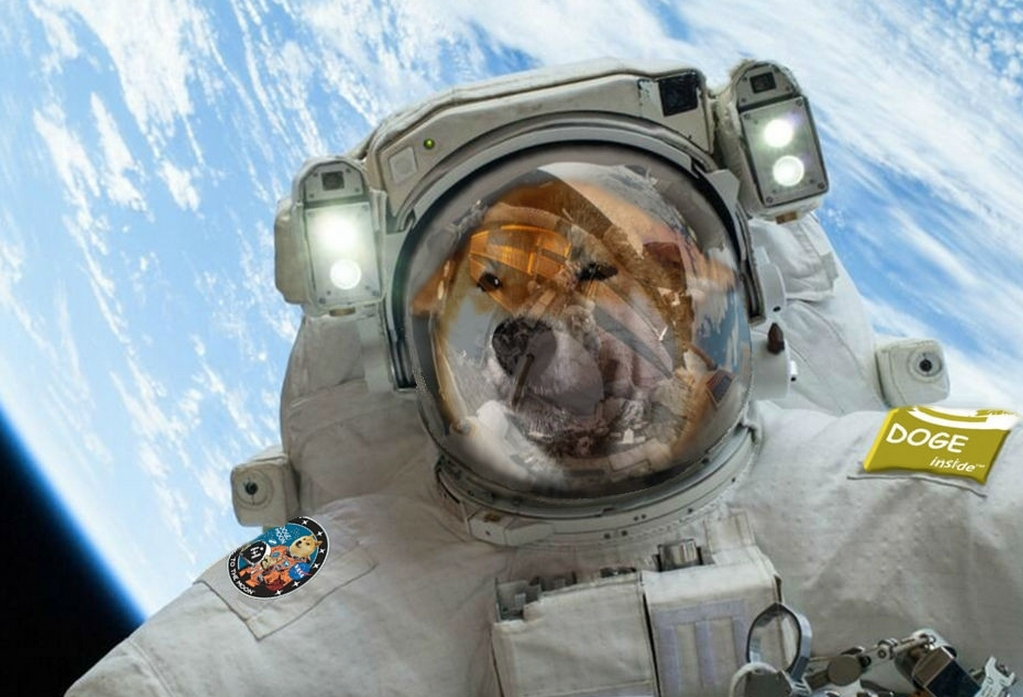
The sudden and explosive rise of Bitcoin NFTs via the new Ordinals project has sparked plenty of creativity from Web3 builders. Chainspace is one of the most vibrant examples to date—an experimental art project that connects Bitcoin and Ethereum through a lo-fi video rendering app that’s tied to both chains.
The project spans 800 total on-chain apps, each a unique portal that pseudonymous co-creators Timshel and el-ranye describe as a “digital object that emits infinite art.” Put simply, each web app—which lives entirely in an Ordinals inscription on the Bitcoin blockchain—is like a Snapchat filter that manipulates the image coming from your computer or device camera.
Essentially, it takes your detailed selfie cam footage and renders it like old-school ASCII art, using letters and symbols to depict your real-time video view in a more abstract, stylized manner. Each Chainspace portal gives a different effect, and some are inspired by the look and vibe of notable Web3 projects like Loot and Terraforms.
Timshel, who’s a key figure in the emerging “Lootverse” gaming community and involved in on-chain publishing efforts, told Decrypt that Chainspace provides a way for Web3 users to share a bit of their humanity with communities without fully doxxing themselves. Timshel showcased Chainspace-derived screenshots that users shared in the project’s Discord.
“This is beautiful because this ‘GM’ is much more essential and resonant and human than [a] random Pepe emoji,” Timshel told Decrypt. “There’s something really cool and special to see how people are using this, sharing their feelings, their selves, and their faces.”
The NFT or inscription is not an “access pass” to an experience hosted elsewhere. Because Ordinals can hold a lot more on-chain data than an Ethereum NFT, the complete web app is inscribed onto the Bitcoin blockchain as a digital artifact. Each Chainspace portal exists as its own unique Ordinals inscription that can be transferred between owners.
“The Ordinals innovation, and the idea of inscribing up to now 4MB of content onto a single Satoshi on Bitcoin—it just immediately clicked to me,” Timshel told Decrypt. “It opened up a whole blossom of ideas in my head about things you can do that are higher fidelity than what’s possible on ETH, but still create a token on ETH that’s tradable and ownable.”
Across chains
His comment hints at the Ethereum component of the Chainspace equation, but there are layers to it. Thursday’s NFT mint will actually take place on Ethereum, with each portal represented by an Ethereum NFT that can be minted through Zora and traded through major marketplaces.
The Ethereum NFT is connected to the Bitcoin-based Ordinal on-chain through a smart contract—which holds the code that powers decentralized apps (dapps) and NFT projects—developed by Zora software engineer Iain Nash. The Ethereum NFT artwork you see on a marketplace like OpenSea is actually a screenshot generated from the Ordinal inscription.
But they’re also paired in the sense that the NFT buyers can choose to trade in the Ethereum version and take custody of the Bitcoin Ordinal instead. Right now, that requires a manual process that Timshel and el-ranye can handle, but they aim to make it an easier, automated process as more and more Ordinals infrastructure comes online.
As such, Timshel describes Chainspace as being “200% on-chains”—yes, plural—since there’s a part of the experience on both Bitcoin and Ethereum, and they’re intertwined.
But the swap of the Ethereum NFT for custody of the Bitcoin Ordinal is a one-way process; they won’t let users swap back and forth or hold both versions at the same time. He also cautioned that the ability to swap is dependent in part on the status of Ordinals, a fast-evolving space that has proven contentious to some Bitcoin aficionados. It’s all an experiment for now.
Chainspace portals are publicly accessible, again reinforcing the idea that NFT owners are not buying an exclusive access pass. Anyone can use one of the portals and capture a still image from the manipulated video feed, and then they can do whatever they want with those—share them through social media, mint them on-chain, generate derivative art, etc.
They’ll put 620 of the NFTs on sale on Thursday, with an allowlist of active Discord users—people who have already shared their Chainspace screenshots and creations—able to mint one of the Ethereum NFTs for 0.33 ETH (about $550). Another 100 NFTs will be airdropped to Web3 builders who helped or influenced the project, with 60 NFTs reserved for the team.
Another 20 Chainspace apps, called X-portals, will have no Ethereum NFT counterpart and will live exclusively on Bitcoin. Those will be reserved for future auctions, as well as for the community around Ethereum NFT art project, Terraforms.
‘Smashed penny’
Given that they’re publicly accessible, why would someone want to buy and own a Chainspace portal that isn’t exclusively available to them? It doesn’t come with any future promised utility or benefits, for example. A handful of the portals are available to play with via the project’s website, while others can be accessed via each Ordinal’s own page.
Timshel cited the growing buzz around Ordinals and early on-chain inscriptions, and bets that people excited about on-chain media and Web3 experiments will want to own a portal. He likened it to public art installations that are open to all but ultimately still owned by someone, and compared an inscribed Satoshi to a souvenir flattened penny from an amusement park.
I’m having so much fun generating these Chainspace templates aka high-functionality digital objects that bridge you into a higher plane.
Experimental/performance art by @TimshelXYZ and @richa891 – in Chainspace, you are the art!👩🎨🖼️ pic.twitter.com/9c7AOtje3c
— ozorian89 (@richa891) February 11, 2023
“I think people are really excited about owning the actual Satoshi itself,” he said. “They want the ‘smashed penny’ with art on it in their wallet.”
Already, they’re seeing people turn Chainspace still images into derivative projects, such as Ethereum NFTs of screenshots of hand gestures or AI-assisted generative interpretations. People are free to do what they want with the portals, even if they don’t own them.
But ultimately, the goal is to explore new frontiers in experimental on-chain art tools while giving each user a totally unique experience. It loops back to the phrase that the co-creators have been using since the project was unveiled last week: “You are the art.”
“Every portal is public and inscribed on Bitcoin for anybody to render, forever. But every viewing is a private one-of-one,” Timshel explained. “I don’t think there ever will be another time where somebody’s pixels and Chainspace look exactly like what’s on my screen right now. It’d be like finding a grain of sand in the universe.”
Stay on top of crypto news, get daily updates in your inbox.
Read More: decrypt.co








 Bitcoin
Bitcoin  Ethereum
Ethereum  Tether
Tether  XRP
XRP  Solana
Solana  Dogecoin
Dogecoin  USDC
USDC  Cardano
Cardano  Lido Staked Ether
Lido Staked Ether  TRON
TRON  Avalanche
Avalanche  Sui
Sui  Wrapped stETH
Wrapped stETH  Toncoin
Toncoin  Chainlink
Chainlink  Shiba Inu
Shiba Inu  Wrapped Bitcoin
Wrapped Bitcoin  Stellar
Stellar  Hedera
Hedera  Polkadot
Polkadot  WETH
WETH  Bitcoin Cash
Bitcoin Cash  LEO Token
LEO Token  Uniswap
Uniswap  Litecoin
Litecoin  Pepe
Pepe  Hyperliquid
Hyperliquid  Wrapped eETH
Wrapped eETH  NEAR Protocol
NEAR Protocol  USDS
USDS  Ethena USDe
Ethena USDe  Internet Computer
Internet Computer  Aptos
Aptos  Aave
Aave  Mantle
Mantle  MANTRA
MANTRA  Render
Render  POL (ex-MATIC)
POL (ex-MATIC)  Cronos
Cronos  Ethereum Classic
Ethereum Classic  Monero
Monero  Bittensor
Bittensor  Artificial Superintelligence Alliance
Artificial Superintelligence Alliance  Dai
Dai  Tokenize Xchange
Tokenize Xchange  Virtuals Protocol
Virtuals Protocol  Filecoin
Filecoin